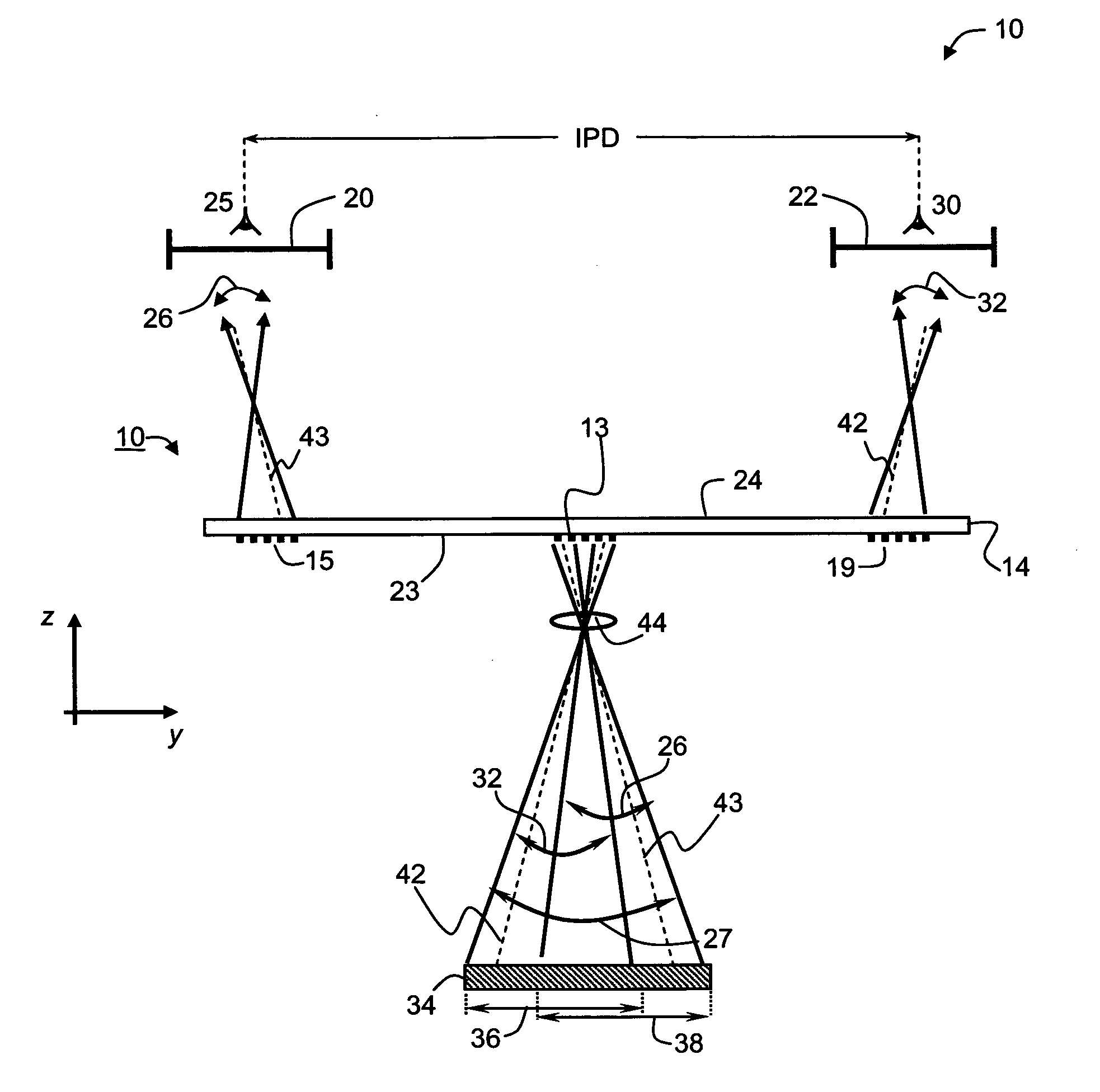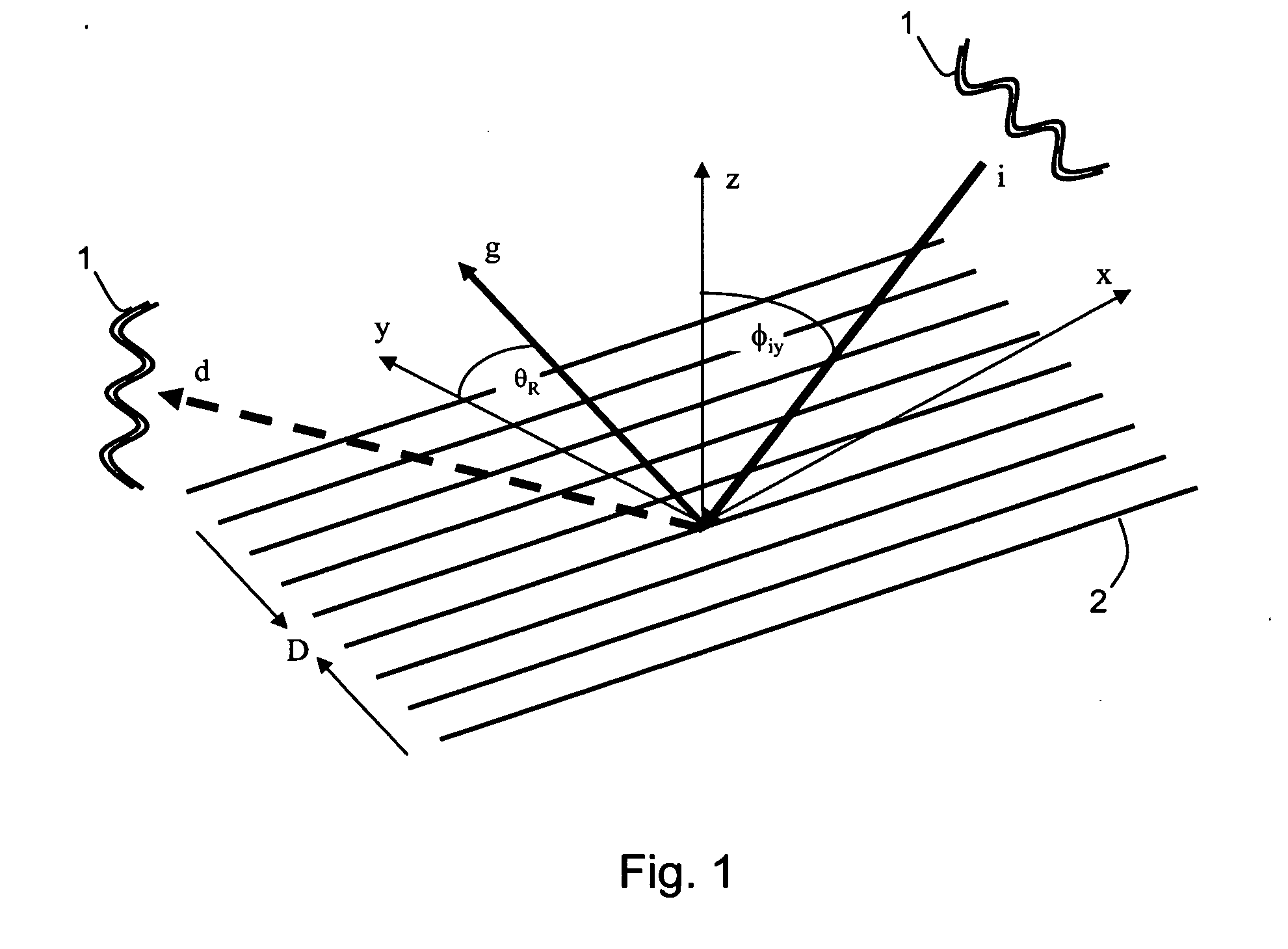Stereoscopic Binocular System, Device and Method
a binocular system and binocular lens technology, applied in the field of optics, can solve the problems of not being able to easily miniaturize, heavy crt display, heavy, etc., and achieve the effect of improving the quality of the imag
- Summary
- Abstract
- Description
- Claims
- Application Information
AI Technical Summary
Benefits of technology
Problems solved by technology
Method used
Image
Examples
Embodiment Construction
[0057]The present embodiments comprise system, device and method which can be used providing virtual images. Specifically the present embodiments can be used for providing stereoscopic vision of a three-dimensional scene to the eyes of the user.
[0058]The principles and operation of the optical system according to the present invention may be better understood with reference to the drawings and accompanying descriptions.
[0059]Before explaining at least one embodiment of the invention in detail, it is to be understood that the invention is not limited in its application to the details of construction and the arrangement of the components set forth in the following description or illustrated in the drawings. The invention is capable of other embodiments or of being practiced or carried out in various ways. Also, it is to be understood that the phraseology and terminology employed herein is for the purpose of description and should not be regarded as limiting.
[0060]When a ray of light m...
PUM
 Login to View More
Login to View More Abstract
Description
Claims
Application Information
 Login to View More
Login to View More - R&D
- Intellectual Property
- Life Sciences
- Materials
- Tech Scout
- Unparalleled Data Quality
- Higher Quality Content
- 60% Fewer Hallucinations
Browse by: Latest US Patents, China's latest patents, Technical Efficacy Thesaurus, Application Domain, Technology Topic, Popular Technical Reports.
© 2025 PatSnap. All rights reserved.Legal|Privacy policy|Modern Slavery Act Transparency Statement|Sitemap|About US| Contact US: help@patsnap.com



